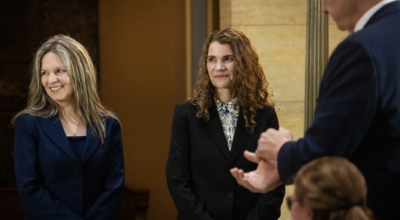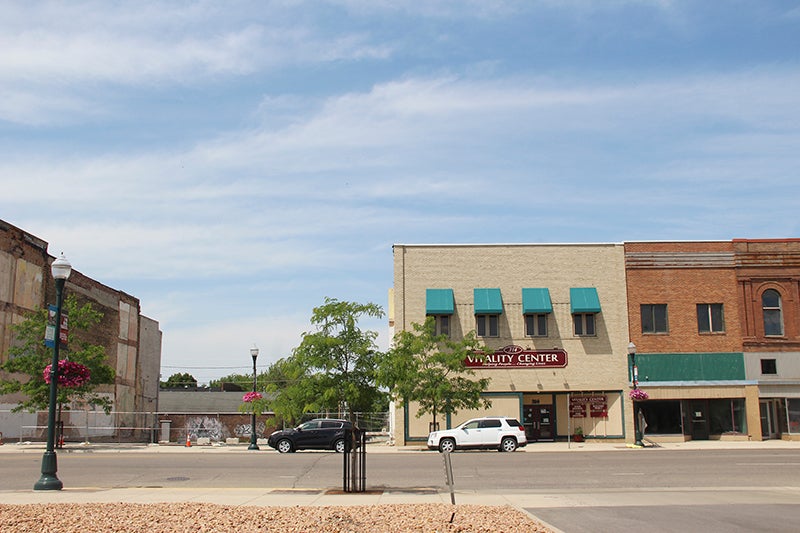Vitality Project leader: ‘You’ve pulled it off’
Published 9:25 am Wednesday, October 14, 2009
They called Albert Lea the Minnesota Miracle.
Just 10 short months ago, AARP and Blue Zones leaders came to Albert Lea to teach the city’s residents how to live longer.
But in the end, it was Albert Leans who did the teaching, said Nancy Graham, editor of AARP The Magazine.
Thanks to city residents and leaders, the community has taken hold of the pilot AARP/Blue Zones Vitality Project designed to help them live longer, better lives.
And they’ve pulled it off.
“You have pulled off something in this town that no other city in the nation has done,” Graham said.
During what was a celebration of the end of the pilot project portion of the AARP/Blue Zones Vitality Project, about 370 people came together in the Albert Lea High School gymnasium to hear the successes of the project and to find out the future of its initiatives in Albert Lea.
Blue Zones founder Dan Buettner said Albert Lea took a huge risk when AARP and Blue Zones leaders came to the city in January with ideas for the project. The goal was to put into practice the principles Buettner discovered while exploring places around the world where people live extraordinarily long and healthy lives.
When the project kicked off in January, it focused on four domains: Community, social networks, habitat and inner self.
The project brought in the nation’s top experts in these categories, and community leaders began working to make changes to the community that would promote health and longevity. As a result, many changes were made in the way residents eat, work, exercise and play.
Buettner said since the project has taken off, 3,000 people, conservatively speaking, have taken part in at least some aspect of the project, and there are estimates that number could be as high as 9,000.
Participants who completed the interactive Vitality Compass at both the beginning and end of the project increased an average of 3.1 years life expectancy per person, he said. That’s one more year per person than the initial goal.
They lost an average of 2.6 pounds, reported eating more vegetables and seafood, and reported less days of depression.
“Albert Lea is not only longer lived, but you’re happier, too,” Buettner said.
He talked about some of the changes that have taken place in the community.
He said Albert Lea School District policies have changed under the direction of University of Minnesota professor Leslie Lytle to encourage healthy eating and more activity, and the path around Fountain Lake was completed to make movement a part of everyday life.
With the help of behavior expert Brian Wansink of Cornell University, employers transformed their workplaces, restaurants improved their menus to include food that promotes longevity and local grocery stores promoted healthy eating.
More than 700 residents joined walking moais, or social groups, to promote exercise while strengthening friendships, and citizens logged more than 2,200 hours of community service hours.
Kristin Heinz, coordinator of the walking school bus initiative, thanked the school district for the healthy changes they have made to school policy.
Community Education Director Chris Chalmers said a lot has been done for the children in the community, and they’re excited about living healthy lives.
Albert Lea Mayor Mike Murtaugh said when AARP and Blue Zones first announced the Vitality Project in January, he was just two weeks into taking office as mayor. He was met with a swarm of reporters, and he and other city leaders didn’t quite know what to expect.
In addition to the “Good Morning America” live broadcast today, the AARP/Blue Zones Vitality Project is expected to be in USA Today on Thursday and in AARP The Magazine in an upcoming issue.
“Ten months later I’m very proud of what we’ve done as a community,” Murtaugh said.
He and City Manager Victoria Simonsen thanked the officials of AARP, Blue Zones and United Health Foundation, the project’s financial sponsor, and presented them with shadow boxes of Albert Lea memories.
The Blue Zones crew and Health Initiative Director Joel Spoonheim were each given keys to the city.
United Health Foundation Executive Director Daniel Johnson said the Vitality Project has exceed its expectations for the amount of civic engagement it has brought.
United Health Foundation decided to get involved with the Vitality Project because it was consistent with the organization’s mission to help people live healthier lives.
Johnson said when he heard about Blue Zones, he thought, “That’s a project that makes a lot of sense.”
When he and other United Health Foundation officials came to Albert Lea in May for the community kickoff, they recognized the high potential there was that the Vitality Project could be successful, he said.
They’ve been able to watch the transformation take place, he said.
Project leaders also thanked the numerous volunteers involved with the project and the leadership team, which has guided it forward.
“For the community of Albert Lea, you have just begun the journey,” Spoonheim said.
Simonsen said she’s proud of the people who have been a part of the project. The people who have made a commitment to it have had a lot of success.
For example, she’s added 13 years life expectancy while losing 13 pounds during the project.
Several city councilors also have had successes.
She said the city recently got back its first six months of data from its health insurance carrier.
Comparing claims from 2007, 2008 and 2009, the claims in the first half of 2009 reduced by 49 percent from the previous year, she said. Mental health claims have gone down 85 percent.
She noted the city will continue watching this statistic, and the Albert Lea-Freeborn County Chamber of Commerce is asking other employers to take note of health insurance changes, too.
She also shared a conversation she had recently with a member of the Kiwanis Golden K II club, who shared how the Vitality Project has impacted the community.
The man said he has lived in Albert Lea for 82 years, and during his whole time here, the Vitality Project has proven to be the strongest community-building project that has ever occurred in the community.
“I’m so proud of being part of a community that decided to take health care into its own hands,” Simonsen said.
On more than one occasion, she noted, she’s been overcome with emotion when thinking about the impact the project has had on individuals.
It’s neat to see the changes, she said.
Albert Lea resident Hazel Senske said she was pleased with the results of the Vitality Project and the impact the project has had on Albert Lea.
“I thought tonight was magnificent,” Senske said. “What a great event for Albert Lea.”
She said she’s been involved with the project since it was first announced.
From it, she’s started walking with other residents, is eating more fruits and vegetables, and has made new friendships.
Third Ward City Councilor Ellen Kehr said the Vitality Project helped her get back on her feet following a recent surgery.
She talked of how when people encourage you to do something healthy, it becomes easier to live that lifestyle.





